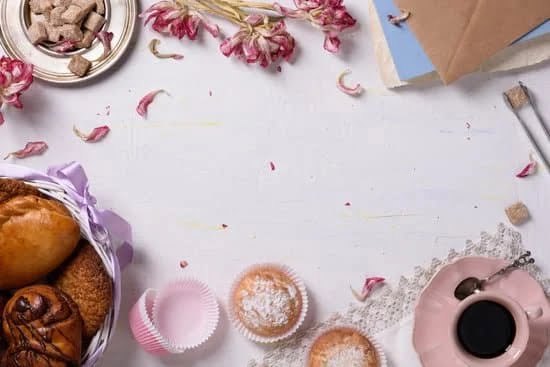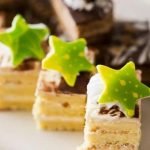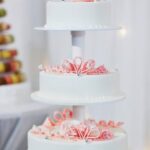Cake decorating butterflies add a touch of whimsy and elegance to any confectionary creation. From delicate and lifelike edible butterflies to vibrant and eye-catching non-edible varieties, these decorative elements have become a staple in the world of cake design. In this article, we will delve into the allure and enchantment of incorporating butterflies into cake decorating, as well as discuss their symbolism and significance in various cultures.
Butterflies hold significant symbolism in many cultures around the world, often representing transformation, hope, and beauty. This makes them a popular choice for adding a meaningful touch to cakes for various occasions such as weddings, birthdays, and graduations. Their delicate and graceful appearance also adds a sense of whimsy and charm to any cake design.
Throughout history, the use of butterflies as cake decorations has evolved and expanded. As we explore the brief history of cake decorating butterflies, we will trace their origins and highlight famous cake decorators who have incorporated these beautiful creatures into their designs. Whether used as a focal point or as subtle accents, butterflies have become an integral part of creating visually stunning cakes that leave a lasting impression.
A Brief History of Cake Decorating Butterflies
The use of butterflies in cake decorating has a rich and fascinating history that spans across various cultures and time periods. The allure of cake decorating butterflies lies in their symbolic significance, as they are often associated with transformation, beauty, and celebration. In many cultures, butterflies symbolize the soul or spirit, making them a popular choice for adding a whimsical and enchanting touch to cakes for special occasions.
The practice of using butterflies as cake decorations can be traced back to ancient civilizations where these delicate creatures were revered for their graceful and ephemeral nature. Over the years, renowned cake decorators have elevated the use of butterflies in their designs, incorporating them into intricate and elaborate creations that have captured the imagination of people around the world.
In recent times, advancements in technology and the art of cake decorating have contributed to a wide variety of styles, sizes, and materials used for creating both edible and non-edible cake decorating butterflies. From lifelike sugar paste butterflies to delicate wafer paper cutouts, there are endless possibilities for incorporating these beautiful creatures into cake designs.
| Butterfly Type | Materials Used |
|---|---|
| Edible Butterflies | Sugar paste, royal icing, wafer paper |
| Non-Edible Butterflies | Plastic, fabric, wire |
When choosing the right butterflies for your cake, it’s important to consider the theme, color scheme, and overall design of the cake. Whether you opt for edible or non-edible butterflies, they should complement the frosting or icing used on the cake while adding a touch of elegance and charm. With careful consideration and creative placement, cake decorating butterflies can truly transform any ordinary cake into a whimsical work of art.
Types of Cake Decorating Butterflies
Cake decorating butterflies come in a variety of styles, sizes, and materials, offering endless possibilities for creating stunning and unique cake designs. From delicate edible wafer butterflies to intricate non-edible plastic or fabric butterflies, there is a wide range of options to choose from when it comes to adding these elegant touches to your cakes.
Edible butterflies are often made from wafer paper, fondant, or gum paste and can be easily shaped and colored to match any cake design. They provide a charming and delightful addition to cakes for special occasions such as weddings, birthdays, or baby showers. On the other hand, non-edible butterflies crafted from plastic or fabric offer durability and can be reused for multiple celebrations.
When selecting the right butterflies for your cake, it’s important to consider the overall theme and color scheme of the cake. Whether you’re aiming for a whimsical, garden-inspired look or an elegant and sophisticated design, there are butterfly options suitable for any style. Additionally, the type of frosting, icing, or fondant used on the cake will also influence your choice of butterflies.
| Edible Butterflies | Non-Edible Butterflies |
|---|---|
| Taste: Adds a hint of sweetness | Durability: Can be reused multiple times |
| Texture: Delicate and light | Detail: Intricate designs with vibrant colors |
| Shelf Life: Limited shelf life due to being edible | Versatility: Available in various sizes and materials |
Ultimately, whether you opt for edible or non-edible butterflies will depend on your specific needs and preferences for the cake design. Both types offer their own unique benefits and can enhance the visual appeal of any cake creation.
Choosing the Right Butterflies for Your Cake
When it comes to choosing the right butterflies for your cake, there are a few key factors to consider in order to ensure that they complement the overall design and theme. Here are some tips for selecting the perfect cake decorating butterflies:
- Theme and Color Scheme: Consider the theme and color scheme of the event or celebration for which the cake is being made. Whether it’s a wedding, birthday, or other special occasion, choosing butterflies that match or complement the colors of the event can help tie everything together beautifully.
- Size and Style: Selecting butterflies that are proportional to the size of the cake is important for achieving a balanced and visually appealing result. Additionally, consider the style of the butterflies – whether they are realistic, whimsical, or stylized – and how well they align with the aesthetic you’re aiming for.
- Material: Depending on whether you’re using edible or non-edible butterflies, consider the material from which they are made. For edible butterflies, think about their taste and texture in relation to the flavor profile of the cake. For non-edible butterflies, choose a material that aligns with any specific dietary restrictions or preferences.
In addition to these considerations, it’s also important to think about how the chosen butterflies will interact with the type of frosting, icing, or fondant used on the cake. Ensuring compatibility between all elements will contribute to an overall cohesive and harmonious design.
By paying attention to these details and taking into account these considerations when choosing your cake decorating butterflies, you can create a stunning final product that leaves a lasting impression on everyone who sees it.
How to Place and Arrange Cake Decorating Butterflies
Placing and arranging cake decorating butterflies is an essential skill that can take your cake design to the next level. Whether you are using edible or non-edible butterflies, the way you position them on the cake can greatly impact the overall aesthetic and visual appeal. Here are some tips for ensuring that your butterflies make a stunning statement on your cake:
- Consider the size and quantity of butterflies: Before placing the butterflies on the cake, consider their size and how many you will be using. You can create visual interest by varying the sizes and positioning them in clusters or scattered arrangements.
- Use an uneven number of butterflies: When arranging the butterflies on a cake, it’s visually pleasing to use an odd number rather than an even number. This can create a more natural and appealing look.
- Positioning for depth and dimension: To create depth and dimension, consider placing some of the butterflies flat against the surface of the cake while slightly angling others upward. This will give the illusion of movement and add visual interest.
When selecting where to place your butterflies, consider areas that will enhance your overall design concept.
For instance, if you have cascading flowers or a focal point on one side of the cake, placing a few small butterflies in that area can draw attention to it.
Remember to step back periodically as you work to ensure balance and symmetry in your arrangement. With these tips in mind, you can confidently arrange your cake decorating butterflies for maximum visual impact.
Edible vs Non-Edible Cake Decorating Butterflies
When it comes to cake decorating butterflies, one of the main considerations is whether to use edible or non-edible butterflies. Each option has its own pros and cons, and understanding the differences can help you make the best choice for your cake design.
Pros and Cons of Edible Butterflies
Edible butterflies are made from materials such as wafer paper, fondant, or gum paste that are safe for consumption. These butterflies can add a delicate and realistic touch to a cake, enhancing its overall appearance. They are also customizable in terms of color, size, and texture, allowing for a personalized touch to any cake design. However, edible butterflies may have a shorter shelf life compared to non-edible ones, and they may not hold up well in certain environmental conditions.
Pros and Cons of Non-Edible Butterflies
Non-edible butterflies are typically made from materials like plastic, silk or paper. These options are often more durable and long-lasting than their edible counterparts, making them suitable for cakes that will be displayed for an extended period of time. Non-edible butterflies also offer a wider variety in terms of shapes and sizes, allowing for more creative freedom in cake design. However, these butterflies are not meant for consumption and should be removed from the cake before serving.
Ultimately, the decision between using edible or non-edible butterflies depends on factors such as the intended use of the cake, the desired aesthetic effect, and practical considerations such as storage and transportation. Regardless of which type you choose, incorporating cake decorating butterflies can elevate any cake design to new heights of beauty and elegance.
DIY Cake Decorating Butterflies
Creating your own cake decorating butterflies can add a personalized and unique touch to any cake design. Whether you’re using edible or non-edible materials, DIY butterflies allow for endless creativity and customization. Here are some tips and ideas for making your own butterflies for cake decorating.
Edible Butterflies
If you’re interested in using edible butterflies for cake decorating, there are various techniques to consider. One popular method is using thinly rolled fondant or gum paste that can be shaped and molded into intricate butterfly designs. Another option is to use wafer paper or rice paper to create delicate and lifelike edible butterflies. These edible creations can be painted with food coloring or luster dust to add realistic details.
Non-Edible Butterflies
For non-edible cake decorating butterflies, there are numerous materials and techniques available. Consider using polymer clay, fabric, or even paper to craft durable and long-lasting butterfly decorations. These non-edible butterflies can be painted, glittered, or adorned with beads and sequins for added flair.
Creative Customization
One of the benefits of DIY cake decorating butterflies is the ability to customize them to fit any theme or style. Experiment with different colors, patterns, and sizes to match the overall design of the cake. Additionally, consider adding personal touches such as monograms, floral accents, or themed embellishments to make the butterflies truly one-of-a-kind.
By creating your own cake decorating butterflies, you can infuse your cakes with a special craftsmanship that will impress and delight anyone who sees them. Whether it’s for a birthday celebration, wedding reception, or other special occasion, DIY butterflies add a beautiful and personalized touch to any cake design.
Inspirational Cake Designs Featuring Butterflies
In conclusion, cake decorating butterflies are not just beautiful embellishments for cakes, they also carry symbolic meanings and cultural significance that add a special touch to any celebration. Whether it’s a wedding, birthday, or other special occasion, the inclusion of butterflies in cake decorating can elevate the overall look and feel of the design. From their origins in cake decoration to the variety of styles, sizes, and materials available, butterflies offer endless possibilities for creativity and customization.
When choosing butterflies for your cake, it’s important to consider factors such as theme, color scheme, and the type of frosting or fondant being used. The right selection of butterflies can enhance the design and create a visual impact that captivates anyone who sees it. Additionally, understanding how to place and arrange the butterflies on the cake is essential for achieving depth and dimension in the overall presentation.
Whether opting for edible or non-edible butterflies, there are advantages and considerations to weigh. While edible butterflies offer a unique taste experience, they may have a shorter shelf life compared to non-edible options.
Nevertheless, with DIY tutorials readily available, creating custom butterflies for cake decorating has never been easier. The beauty of incorporating butterflies into cake designs truly knows no bounds – from elegant and sophisticated to whimsical and playful, these delicate creatures bring an enchanting element to any creation.
Frequently Asked Questions
How Do You Decorate a Cake With Butterflies?
Decorating a cake with butterflies can be done by using edible or non-edible butterfly decorations. One way to do this is by using fondant or gum paste to create 3D butterflies that can be placed on the cake. Another option is to use a stencil to airbrush or paint butterfly designs directly onto the cake.
How Do You Make Edible Butterflies for Cakes?
Making edible butterflies for cakes can be done using thinly rolled fondant or gum paste that has been cut into butterfly shapes using cookie cutters. After cutting out the shapes, they can be further detailed and textured using a veining tool and then left to dry before being attached to the cake using edible adhesive.
How Do You Cut a Cake Into a Butterfly Shape?
Cutting a cake into a butterfly shape involves first baking two round cakes of the same size and then cutting each one in half. Two of the halves are arranged with straight edges touching to form the butterfly’s body, while the other two halves are positioned at angles to serve as the wings.
The cake can then be frosted and decorated as desired, creating a butterfly-shaped dessert.

Welcome to our cake decorating blog! My name is Destiny Flores, and I am the proud owner of a cake decorating business named Cake Karma. Our mission is to provide delicious, beautiful cakes for all occasions. We specialize in creating custom cakes that are tailored specifically to each customer’s individual needs and tastes.





